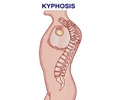Checking children affected from blunt trauma for CSI (cervical spine injury) risk factors could cut unnecessary computed tomography (CT) scans and radiation exposure by half.

‘Reducing the current number of CT scans for cervical spine injury by half, each year could save hundreds of children from cancer.’
Read More..




The findings, published in Pediatrics, mainly confirm those made in an earlier retrospective study. Together, the studies support a larger ongoing research aimed at developing a CSI risk assessment tool clinicians can use to decide which children need imaging.Read More..
"Injury is the leading cause of morbidity and mortality in children, so we see a lot of children and have to evaluate them for injuries in the prehospital and emergency department settings," said the study's author Julie Leonard, MD, MPH, an Emergency Medicine physician and principal investigator in the Center for Injury Research and Policy at the Abigail Wexner Research Institute at Nationwide Children's Hospital. "We need to be able to quickly decide which children have serious injuries and provide them the highest level of care and service," said Dr. Leonard, who is also an associate professor of Pediatrics at The Ohio State University College of Medicine. "But we don't want to subject the large majority of children, who have experienced a traumatic event but have minor injuries, to unnecessary and potentially harmful testing and interventions."
Studies estimate that for every 1,000 CT scans in children, one to two new cancers are induced, Dr. Leonard said. "If you cut the current number of CT scans for cervical spine injury in half, each year, you spare hundreds of children from cancer."
Testing children for CSI has skyrocketed 400% in the past two decades, and imaging for these patients has shifted away from X-rays, which emit some radiation, to CT scans, which expose kids to far more, Dr. Leonard adds.
"Historically, the line of reasoning given by general physicians and adult emergency physicians for these scans is that children are difficult to evaluate and don't have identifiable risk factors," said Dr. Leonard. "This study shows there are risk factors physicians can use to screen children for CSI that can help aid their decision-making as to which children warrant radiographic testing and which children can be cleared based on history and a physical exam."
Advertisement
The seven factors that were the most informative are:
- injury acquired while diving
- axial load, from landing on the top of the head or other blunt force directly in line with the spine
- any self-reported neck pain
- reported inability to move neck
- altered mental status on examination in the emergency department
- intubation due to airway injury, respiratory failure or inability to protect their airway or respiratory distress
Advertisement
Source-Eurekalert











